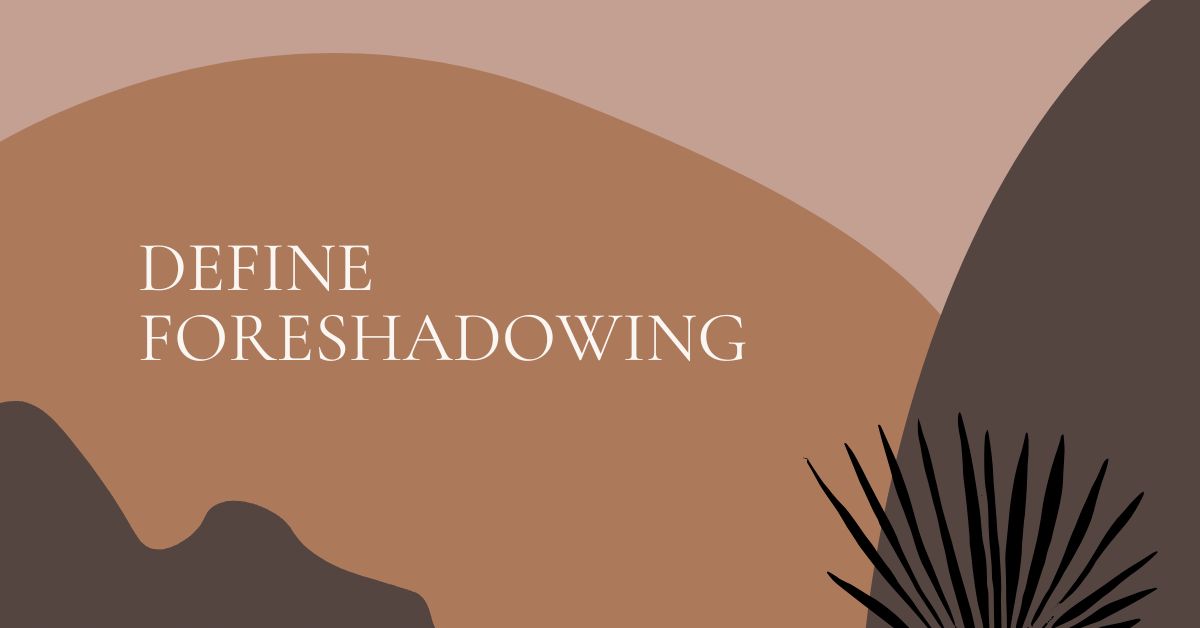Meanings of Foreshadowing
Foreshadowing is a literary technique that uses hints or clues to suggest events that will occur later in a story. It can be used to build suspense, create a sense of mystery, or give readers a sense of the direction in which the story is heading. Foreshadowing can take many forms, including dialogue, actions, or details hinting at future events. It can be subtle or overt, and it can set the stage for a climactic moment or reveal a key plot point. Using foreshadowing, authors can engage readers and keep them guessing what will happen next.
Definition of Foreshadowing
In literature, Foreshadowing is used to give hints or clues about events that will occur later in the story. It creates suspense, builds tension, and increases the reader’s engagement with the plot. Foreshadowing can be subtle, such as a character making a casual remark about a future event, or more overt, such as a character encountering a later significant symbol in the story. Some of its forms are red herrings, flashforwards, or symbols.
Types of Foreshadowing
There are several types of foreshadowing, including:
- Direct: This type of foreshadowing is when the author tells the reader what will happen in the future. For example, “Tom’s fate was sealed when he picked up the cursed artifact.”
- Symbolic: This type of foreshadowing uses symbols or imagery to hint at future events. For example, a character seeing a white dove may symbolize peace and happiness, while a character seeing a black cat may symbolize bad luck or danger.
- Situational: This type of foreshadowing involves setting up a situation that will have consequences later in the story. For example, a character choosing to ignore a warning about a dangerous path may lead to danger later.
- Verbal: This type of foreshadowing uses dialogue or conversation to hint at future events. For example, a character saying, “I have a feeling this is going to be a long, difficult journey,” may foreshadow the character’s challenges.
- Characterization: This type of foreshadowing involves the development of a character’s personality or traits that hint at their future actions. For example, a dishonest character may be more likely to betray others later in the story.
Literary Examples of Foreshadowing
- In Shakespeare’s Romeo and Juliet, the line “For never was a story of more woe than this of Juliet and her Romeo” foreshadows the play’s tragic ending.
- In George Orwell’s 1984, the “Memory Hole” mentioned early in the novel foreshadows the government’s manipulation and erasure of history.
- In Agatha Christie’s The Murder of Roger Ackroyd, the character of Ralph Paton repeatedly mentions his fear of being accused of a crime he didn’t commit, which ultimately foreshadows his own murder.
- In Edgar Allan Poe’s “The Tell-Tale Heart,” the narrator’s frequent insistence that he is not mad foreshadows the revelation that he is indeed insane.
- In J.R.R. Tolkien’s The Lord of the Rings, the mention of the Ringwraiths and their search for the One Ring foreshadows the Ring’s central role in the story.
- In the novel “The Great Gatsby,” the green light on the other side of the bay symbolizes Gatsby’s hopes and dreams for the future and foreshadows his eventual tragic ending.
- In the play “Macbeth,” the witches’ prophecies foreshadow the events that will unfold in the story, including Macbeth’s rise to power and eventual downfall.
- In the short story “The Tell-Tale Heart,” the narrator’s obsession with the old man’s eye is a clear sign that he is planning to kill him, foreshadowing the shocking ending.
- In the novel “Pride and Prejudice,” the initial tension between Elizabeth and Mr. Darcy foreshadows their eventual romance and marriage.
- In the novel “To Kill a Mockingbird,” Boo Radley’s mysterious presence is a constant hint that he will play a significant role in the story, and his eventual involvement in saving the children’s lives is a decisive moment of foreshadowing.
How to Create a Foreshadowing
- Identify the event or plot point that you want to foreshadow. This could be a major plot twist, a character’s death, or a key event in the story.
- Think about how you can hint at this event or plot point subtly. This could be through dialogue, actions, or symbols throughout the story.
- Consider the tone and mood of your story. Foreshadowing should be subtle and not give away the plot twist, but should also be noticeable enough that the reader can pick up on it.
- Incorporate the foreshadowing into your story naturally. It should not feel forced or out of place but should fit seamlessly into the narrative.
- Use multiple methods of foreshadowing to build tension and anticipation for the upcoming event. This could be through dialogue, character actions, or symbolic elements.
Benefits of Using Foreshadowing
- Increases suspense and tension: Foreshadowing allows the reader or viewer to anticipate future events, creating a sense of tension and suspense as they wait to see how the foreshadowed event will play out.
- Enhances character development: Foreshadowing can reveal necessary information about characters, such as their motivations, desires, and flaws, which helps to round out and deepen their personalities.
- Improves storytelling structure: Foreshadowing helps to create a cohesive and logical narrative structure, as it ties together various events and plot points in a way that makes sense and feels natural.
- Increases reader engagement: By giving the reader clues about what is to come, foreshadowing keeps them engaged and interested in the story, encouraging them to pay closer attention to the details and look for hidden meanings.
- Enhances the story’s theme: Foreshadowing can also be used to highlight and reinforce the story’s theme, as it helps to draw connections between seemingly unrelated events and ideas.
Suggested Readings
Beautiful World Where Are You by Sally Rooney Summary
Which Literary Device is Used in the Title of Oscar Wilds’s Play The Importance of Being Earnest?


